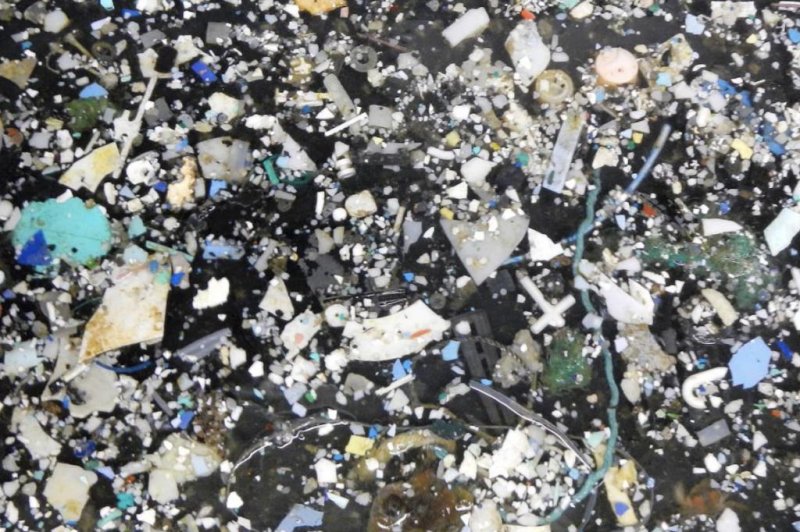A sample of the microplastics captured by the nets trawled behind research vessels investigating the Great Pacific Garbage Patch. Photo by Ocean Cleanup
March 22 (UPI) -- The Great Pacific Garbage Patch is now home to an estimated 160 million pounds of floating plastic refuge and encompasses an area of more than 600,000 square miles -- nearly the size of Alaska.
The latest estimates, the result of three years of research and two field expeditions, were published this week in the journal Scientific Reports.
In recent years, the gyre of floating plastic debris has accumulated a growing abundance of trash. Scientists with the Ocean Cleanup project estimate the patch now features 1.8 trillion pieces of trash.
Just 8 percent of the garbage patch is composed of tiny plastic fragments, microplastics, suspended just beneath the surface. The majority of the patch, 92 percent, is comprised of larger pieces -- a combination of of degraded containers, bottle caps, crates, floats and fishing gear. These large pieces reveal the patch's immense presence.
The latest survey revealed the patch to be anywhere from four to 16 times larger than previous estimates.
"We were surprised by the amount of large plastic objects we encountered," lead scientist Julia Reisser said in a press release. "We used to think most of the debris consists of small fragments, but this new analysis shines a new light on the scope of the debris."
Researchers used a combination of surveying techniques to measure the concentrations of different types and sizes of plastic debris.
Different sized nets trawled behind research vessels helped scientists measure the amounts of microplastics, mesoplastics and macroplastics within the confines of GPGP. For larger plastic pieces, so-called megaplastics, pieces larger than 50 centimeters, scientists with Ocean Cleanup conducted their first-ever aerial survey.
The research plane was outfitted with optical sensors programmed to identify larger pieces of plastic. Back in the lab, scientists combined the aerial observations with the data collected on the research vessels.
"Plastic pollution has been increasing exponentially in the subtropical waters of the North Pacific Ocean over the last decades," researchers wrote in a news release. "Yet, quantities of floating plastic reported are two orders of magnitude less than current global source input estimates."
In other words, there's plenty of plastic in the ocean that's unaccounted for. Scientists believe a considerable amount of plastic pollution is being transported to deeper ocean layers as its broken down into smaller pieces.
Moving forward, scientists with the Ocean Cleanup project plan to investigate how plastic is transported to the garbage patch, how long it stays there and where it goes as its broken down.















